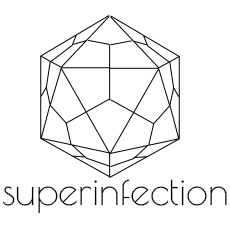There is a clear rise in R&D of antiviral drugs, but in contrast to antibiotics, their activity spectrum is mostly limited to a distinct virus group. For many viruses, particularly those that are highly prevalent in developing countries — including hepatitis and flaviviruses — such drugs are not available. Moreover, the constant emergence of infections with new virus species and the increasing incidences of outbreaks of viral diseases with pandemic potential emphasize the need for broad-spectrum antiviral drugs (Kaufmann SHE, Dorhoi A, Hotchkiss RS, Bartenschlager R. Host-directed therapies for bacterial and viral infections. Nat Rev Drug Discov. 2018;17(1):35-56.). While R&D for canonical antimicrobials that directly target pathogens must continue, complementing strategies such as the host-directed therapy (HDT) with biologics or small molecules are also urgently needed. According to Kaufmann et al, one such HDT approach could be the activation the endogenous innate immune response via TLRs. Various approaches have been developed to boost the endogenous innate (IFN) response, most of them relying on the activation of Toll-like receptors (TLRs). Future activities should focus on the identification of the most suitable host cell factors and pathways that are commonly used by different viruses, particularly those with pandemic potential. HDTs will also require novel thinking both on the side of the drug developers and on the side of the legal authorities responsible for the approval of the drug.
Our Superinfection Therapy program had already accomplished most of the above mentioned goals. Consistent with this, we received Seal of Excellence qualification from the European Union Commission as the institution managing Horizon 2020, the EU Framework Programme for Research and Innovation 2014-2020.
Superinfection leverages its clinically tested SIT technology platform for the safe, effective, widely affordable treatment of life threatening viral diseases, like dengue and Ebola virus infections in resource limited settings. IBDV is not known to be a hazard in transmitting to any other species than domestic fowl, despite its worldwide distribution. Furthermore, the vaccine strain of Superinfection’s IBDV drug candidate (R903/78) is harmless in chickens as well.
In addition to the select drug discovery and development programs highlighted in other sections, Superinfection has a significant internal exploratory effort focused on new target identification and technology development. The most important potential new target diseases are pandemic influenza (Flu), West Nile virus (WNV), dengue virus (DENV) and Ebola virus (EDV) infections. Superinfection suggested that its technological platform could also be exploited in HIV infections. Superinfection is confident that the dsRNA virus based SIT technological platform can be used to save lives of EVD infected people by reducing viral loads at the initial critical infectious period.
The Company believes that its lead drug candidate R903/78, which is now homogeneously produced by reverse genetics, will be the first drug to receive regulatory approval employing the novel SIT concept because of its superior delivery characteristics, its safety profile and its efficacy for clinical applications with unmet medical need. Superinfection is focusing on three key product areas making use of its IBDV technology: (1) Functional cure of advanced chronic HBV during a finite treatment course (Lead product HC001); (2) We wish to treat HBV/HCV coinfected patients without reactivation of HBV (Second product HC002). (3) SIT could mitigate the death toll of the next flu pandemic by an unconventional viral interference strategy, which aims to complement the development of universal prophylactic flu vaccines (Third product HC003). Since the three drug candidates are targeting different patient populations and disease indications, respectively, separate clinical trials will be needed. However, the three drug candidates are identically manufactured ensuring substantial savings in the long run.
